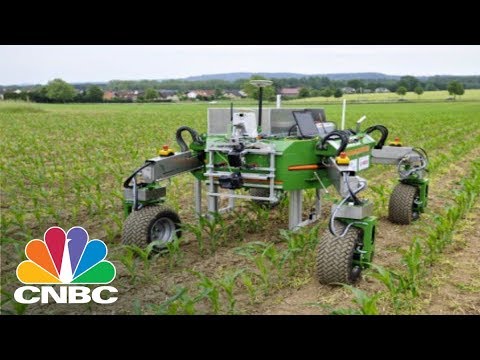The Rise of Robotics in Farming and Agriculture
Advancements in technology have revolutionized various industries, and the farming and agricultural sector is no exception. In a recent report by CNBC's Aditi Roy, she shed light on the significant rise of robotics being used in this industry. With the aim of improving efficiency, productivity, and sustainability, industrial robots applications have become increasingly prevalent. This article explores the various applications of robots in farming and agriculture, delving into the transformative impact they have had on the industry.
Robots have long been associated with manufacturing, but their integration into the farming sector is a relatively new development. The use of robotics in agriculture has gained momentum and has proven to be a game-changer for many farmers. With the ability to perform tasks that were previously labor-intensive and time-consuming, robots are revolutionizing the way crops are cultivated and harvested.
One of the key applications of robots in farming is in the planting and seeding process. Traditionally, this arduous task would require a significant number of laborers spending countless hours in the fields. However, with the advent of robotic technology, this process has become much more streamlined. Agricultural robots equipped with precision planting mechanisms can accurately plant seeds at optimal depths and intervals, ensuring optimal crop growth.
Furthermore, robots are being utilized in the monitoring and maintenance of crops. These autonomous machines can analyze soil composition, detect nutrient deficiencies, and identify the presence of pests or diseases. By collecting data and providing real-time insights, farmers can make informed decisions about watering, fertilizing, and implementing pest control measures. This data-driven approach significantly minimizes resource wastage and maximizes crop yield.
The harvesting process has also undergone a transformation with the integration of robotics. Harvesting robots equipped with advanced sensor technology can efficiently identify when crops reach their optimum ripeness and harvest them at the right time. This eliminates the need for manual labor in harvesting, reducing costs and increasing overall efficiency.
Robots are also being used in livestock management, particularly in dairy farming. Robotic milking machines have emerged as a popular alternative to manual milking. These machines are capable of identifying individual cows, attaching milking cups, and monitoring milk production. This automation reduces the physical strain on farmers and ensures a consistent milking process.
Another fascinating application of robotics in agriculture is the use of drones. Drones equipped with cameras and sensors can capture aerial footage of crops, providing farmers with valuable insights into crop health, irrigation needs, and overall field conditions. This technology helps farmers identify issues promptly and target specific areas for intervention, ultimately improving crop success rates.
The integration of robotics in farming and agriculture has brought about numerous benefits. Efficiency and productivity have significantly increased, as robots can operate 24/7 and perform tasks at a much faster pace than humans. Additionally, the utilization of robots in agriculture has allowed for precision farming, minimizing the use of resources such as water, fertilizers, and pesticides. This, in turn, has led to improved sustainability and reduced environmental impact.
While the rise of robotics in the farming industry presents immense opportunities, it does raise concerns about job displacement. As robots take over labor-intensive tasks, the need for human workers diminishes. However, it is crucial to note that robotics also create new job opportunities, particularly in the technical and maintenance fields. The integration of robotics in agriculture requires skilled technicians to operate and maintain these machines, providing a new avenue for employment.
In conclusion, the rise of robotics in the farming and agricultural industry is transforming the way crops are grown, harvested, and managed. From precision planting to monitoring and maintenance, robots are streamlining processes and improving efficiency, productivity, and sustainability. As the industry embraces this technological revolution, it is essential to strike a balance between harnessing the benefits of robotics and ensuring the well-being of the workforce. Ultimately, the integration of industrial robots applications has the potential to reshape the future of farming and agriculture, paving the way for a more sustainable and efficient industry.
*Link to YouTube video: [How Robots Are Changing The Farming Industry | CNBC](https://www.youtube.com/watch?v=RJudrxLCEIE)
Industrial Robot
"How Robots Revolutionize Agriculture: CNBC's Insight into the Impact on Farming and Industrial Applications"


